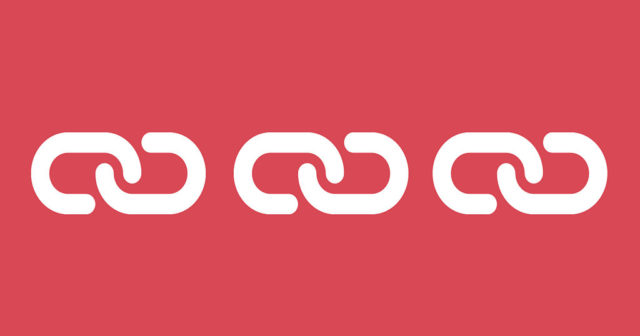Creating ecommerce product pages that rank well, bring in decent search engine traffic, convert well and earn their own inbound links is a tough task. Every single product page on an ecommerce site is a potential landing page for searchers and a well-constructed product page will rank well in its own right in the search engines.
What follows is a breakdown of best practice ecommerce product page elements. From this you’ll be able to take away a number of tips for improving the ecommerce product pages on your site.
1. Solid best practice on-page SEO
A great place to start is to make sure that you get the basic SEO elements right on your product pages by:
- Optimising your product Title Tag
- Optimising your H1 tag
- Adding descriptive Alt Tags
- Adding unique optimised copy.
The messaging used within your Title tag and H1 heading should be thematically similar so that the user knows they have arrived at the right place. The Dreams website’s Tempur Cloud Pillow page shown below ranks well in Google and we can see that they have all of the SEO elements covered.
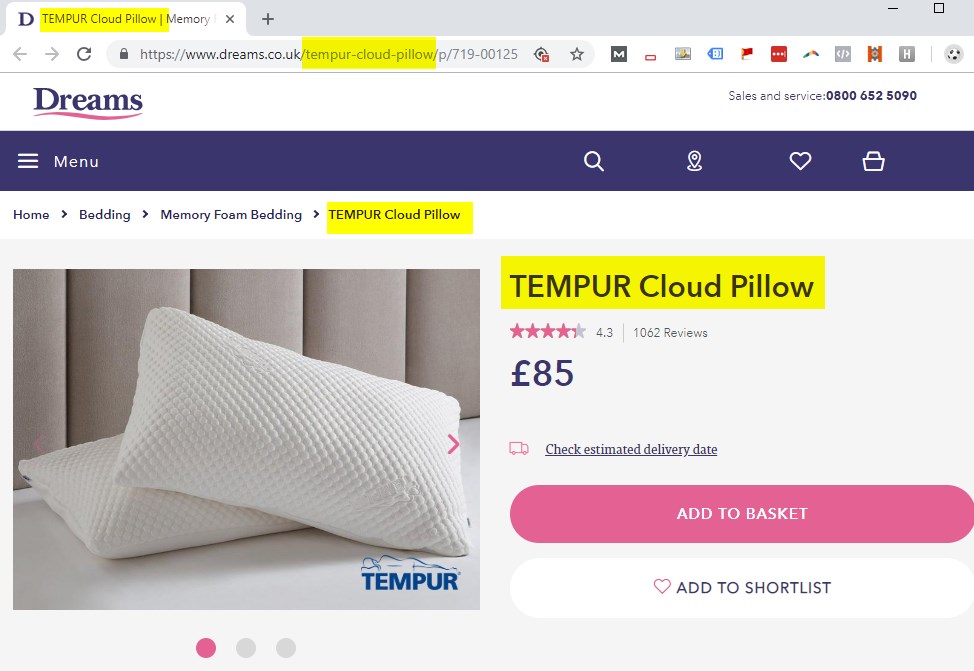
It goes without saying that your on-page optimisation needs to be more natural than simply repeating your exact match target keyword throughout the content.
2. Strong featured image with supporting images
If you are hoping to convert visits into sales then you need to make sure that your page includes an impactful eye level photo that best showcases your product. You are much less likely to achieve a product sale with pixelated or poorly composed feature image.
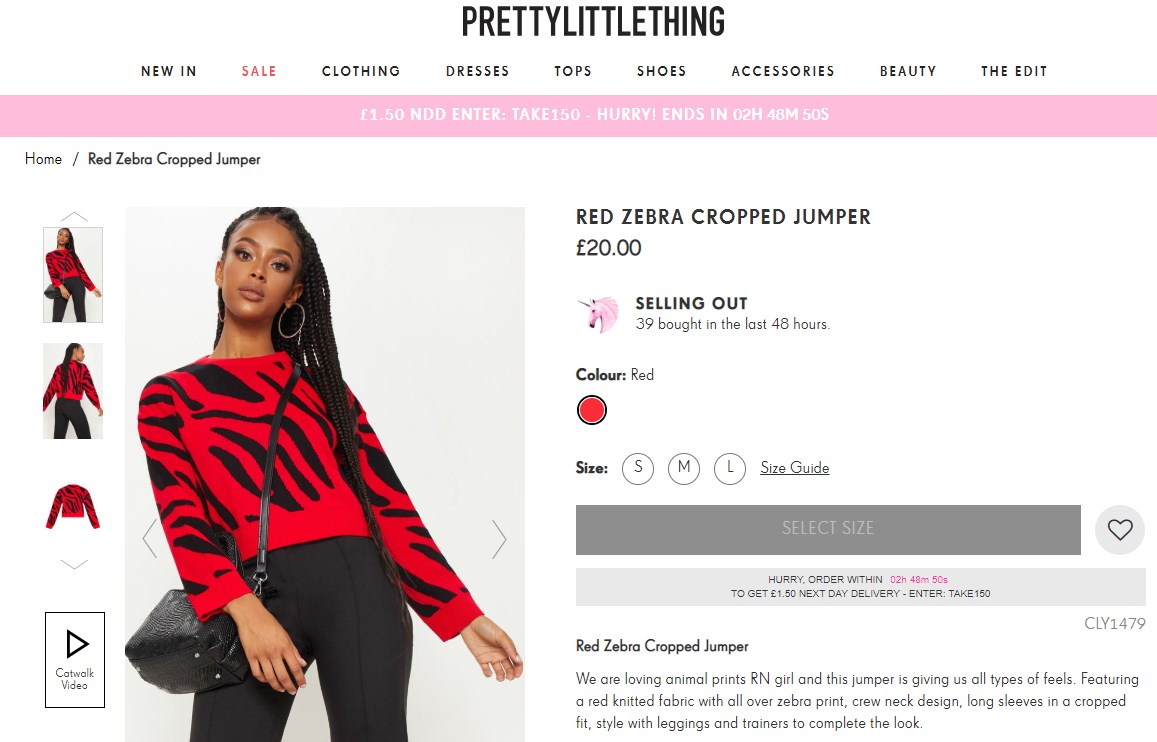
A single product image isn’t enough, you should include multiple images that show the product off from multiple angles with the ability to zoom in easily regardless of device used.
If you’re selling well known brand products you may get away with weaker imagery and achieve sales if your reviews, price and additional information is good. However, if you’re selling unbranded or less well known products then you really will need quality photography.
3. Unfussy call to action
Your call to action should be simple, whether you include ‘Add to Basket’ or other messaging, it should be supported by key pieces of information that are vital to helping the user make a buying decision:
- Whether it is in stock or not
- How much it is
- How much you need to pay for postage and packing
- Clearly signposted delivery timescale information
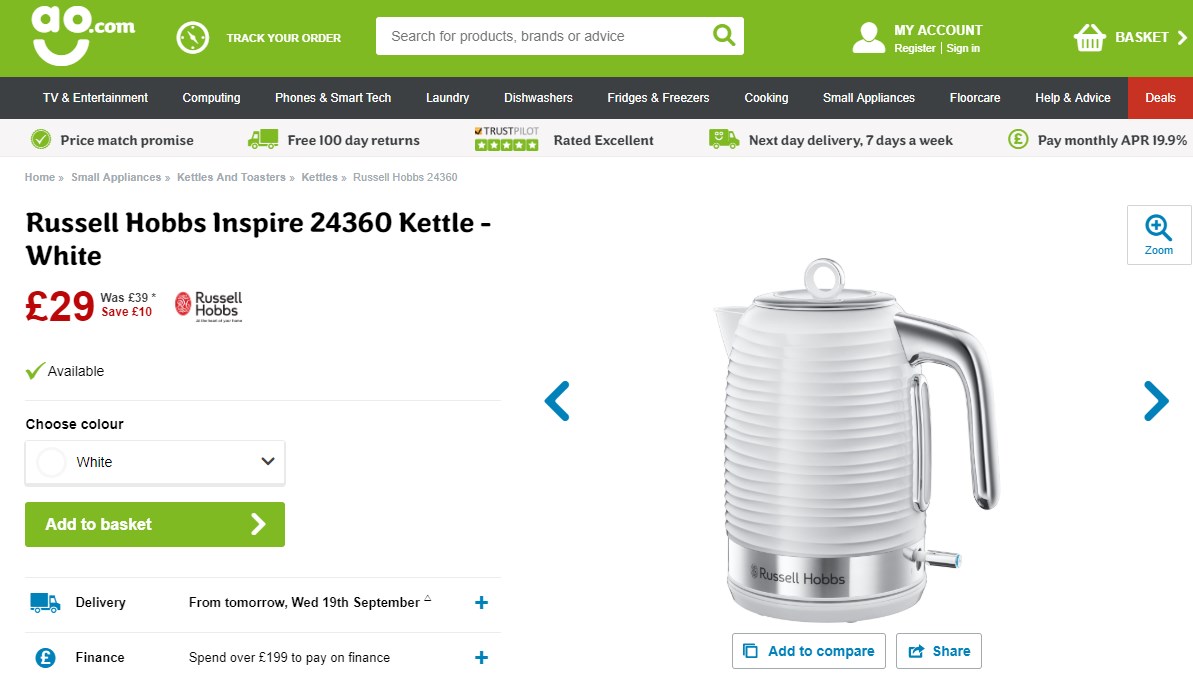
4. Good quality product information
You need original copy on your pages to present key product information. It is perhaps surprising, but many ecommerce sites still suffer from just adding the standard product text that is provided by the manufacturer. This means that there are dozens of other sites with the same photo and text as featured on your site consequently you will simply struggle.
Your product copy should be engaging and informative, answer the visitors questions, as well as being optimised for the search engines. Concentrate on describing the product benefits rather than just listing features. You should still include product specification information but this could go in a separate section.
Think mobile first (as Google does when ranking your website) and make sure that the copy does not impact on the user experience and push the price, title, images and call to action down the page. A recent Nielsen survey highlighted that 60% of users research on mobile before they buy and so ensuring your site works well on mobile is essential.
Try to rewrite your product descriptions to add brand personality as well as being optimised for SEO. An example product from the Appliance Direct site for a Hotpoint washing machine is shown below on mobile and desktop.
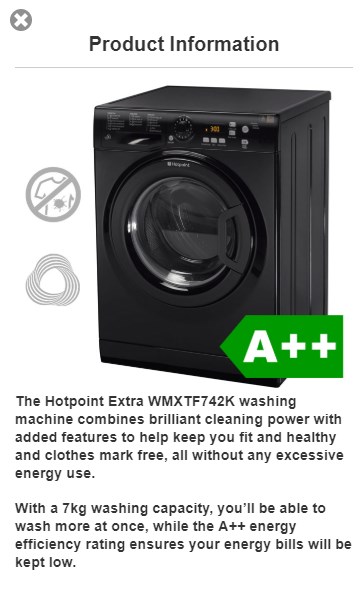
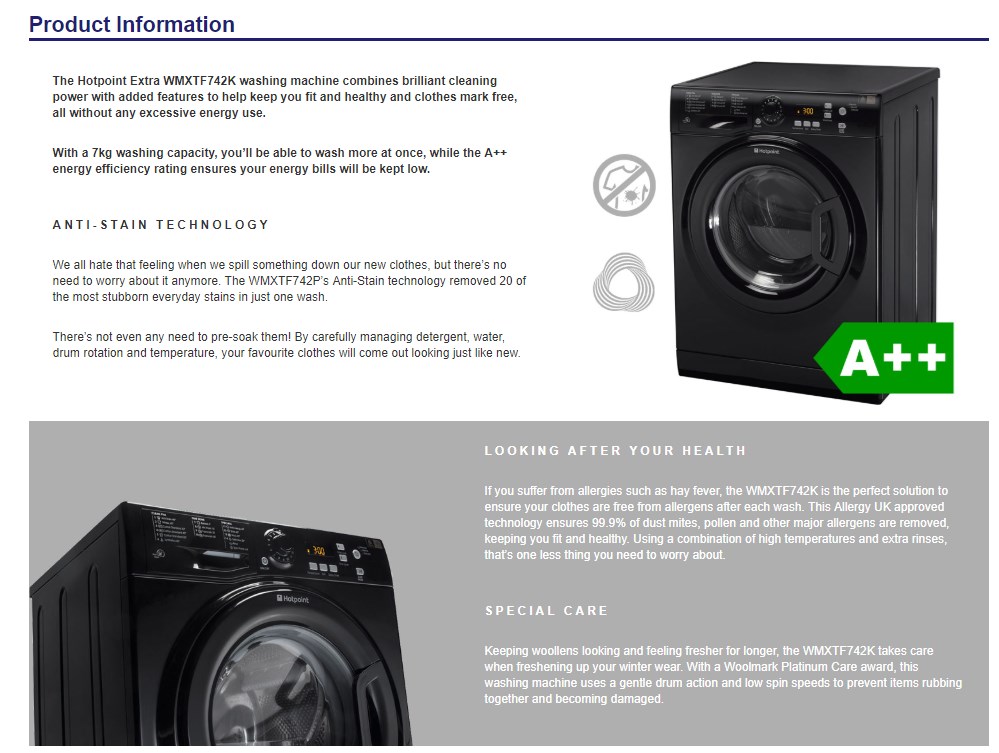
It is a good idea to segment your content into difference sections on your page, similar to the approach taken by the big ecommerce brands such as Amazon, AO and John Lewis.
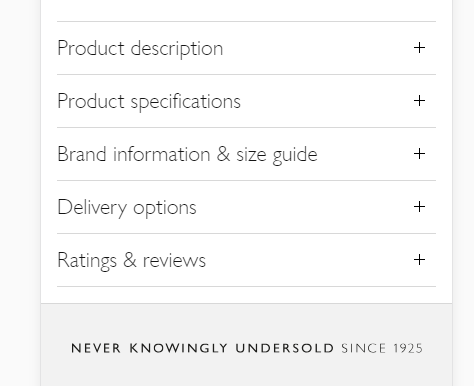
5. Product video and 360 degree images
Being able to view the product with a well composed product video will really help to boost your conversion rate. This will allow users to see the product up close and is the next best thing to viewing the product in a physical store.
It’s great to have plenty of images on a page, though it’s the video that gives the potential customer an overall better understanding of whether the product is for them.
If you don’t have the time or budget for creating videos then you could implement 360 degree image.
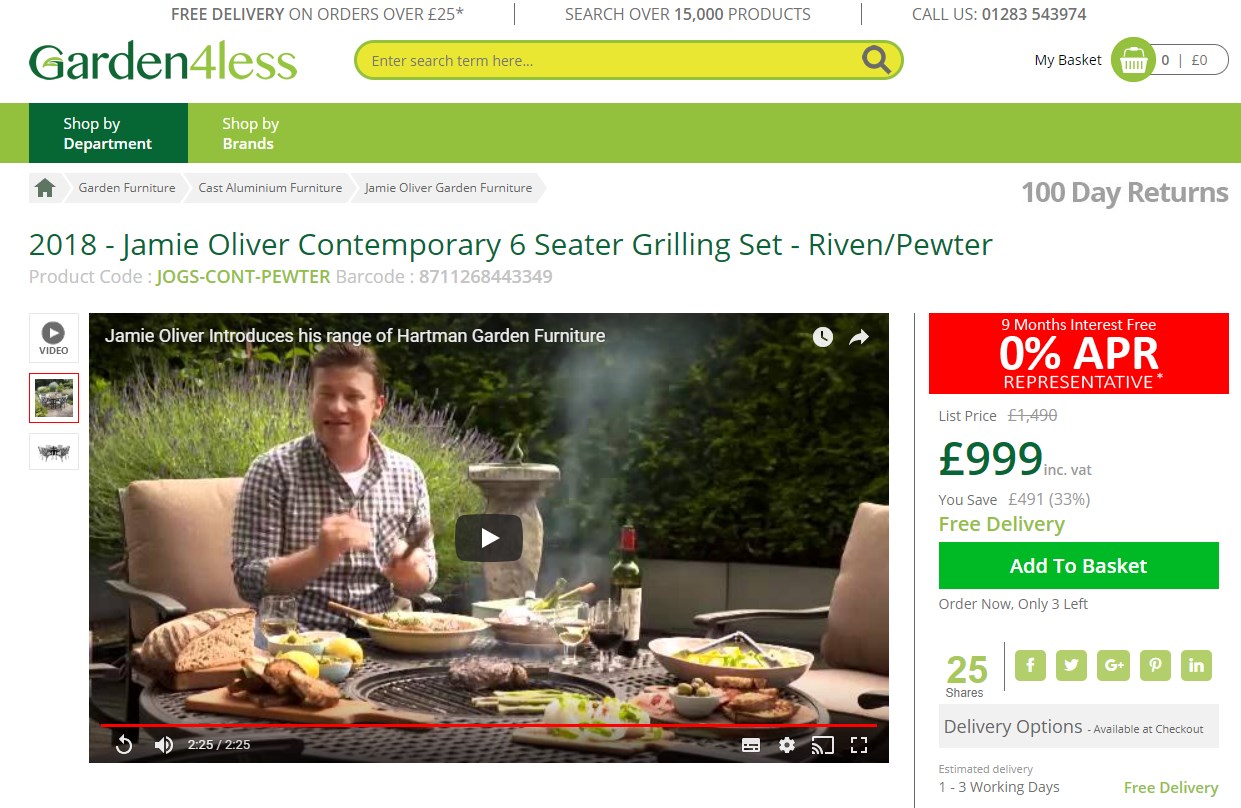
Some quick video statistics:
- Retail website visitors who viewed a video are 64% more likely to buy
- 64% of consumers make a purchase after watching branded social videos. Retail website visitors who viewed a video also spend 2 minutes longer on site per visit
- Views on branded video content have increased 258% on Facebook and 99% on YouTube as of June 2017
Source: tubularinsights Q2 report 2017
6. Schema markup – ecommerce rich snippets
Rich snippets add extra visual detail when your pages appear in the search results making your results more appealing and likely to be clicked on. Adding this onto your product pages will help search engines understand and better present your content in the search results.
To implement rich snippets on your site head over to schema.org/Product to find out about the product schema that you can add to your product pages. You may need to talk to your developer to implement this by making changes to the page templates on your site or by using Google Tag Manager to add the code.
If this is too technical then you can also use Google Search Console’s Structured Data Markup Helper to markup the content on your pages, but it does have limitations.
Product Schema that you should include on your site includes:
- Ratings and Reviews
- Price
- Availability
If marked up correctly your organic search results should show the type of information as shown within the example below.

Additional schema that you may want to look at for your site include:
- Google Answer boxes
- FAQ Snippet
7. Review and ratings
Including reviews on your product pages is proven to increase conversion rates. Third party platforms such as reviews.co.uk, Trustpilot and Feefo allow you to integrate reviews onto your product pages.
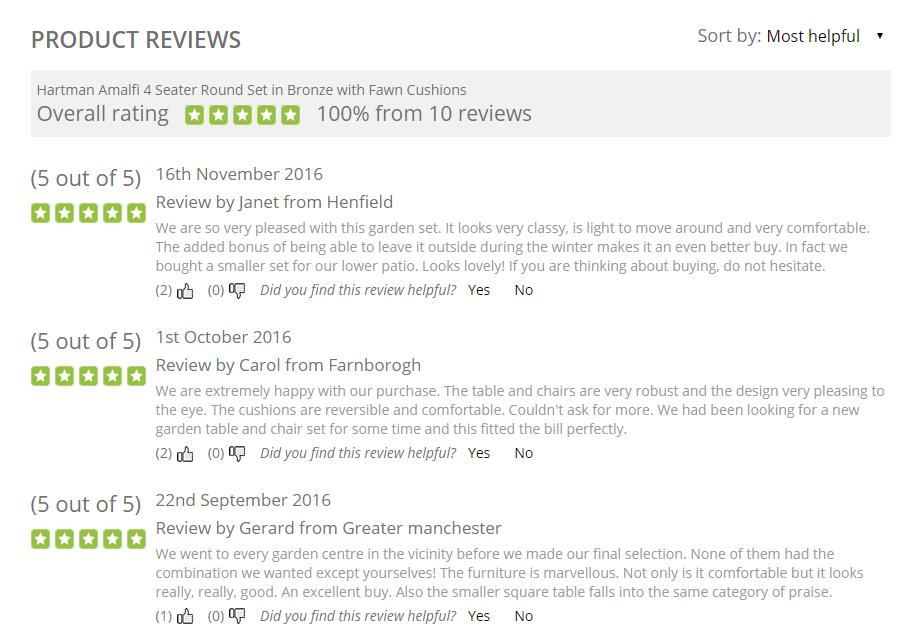
8. FAQs
Allowing users to post questions on product pages is a strategy that has successfully been applied by Amazon. The additional user generated content not only helps to answer user questions but is good for search engines and keeps the content more regularly updated and fresh.
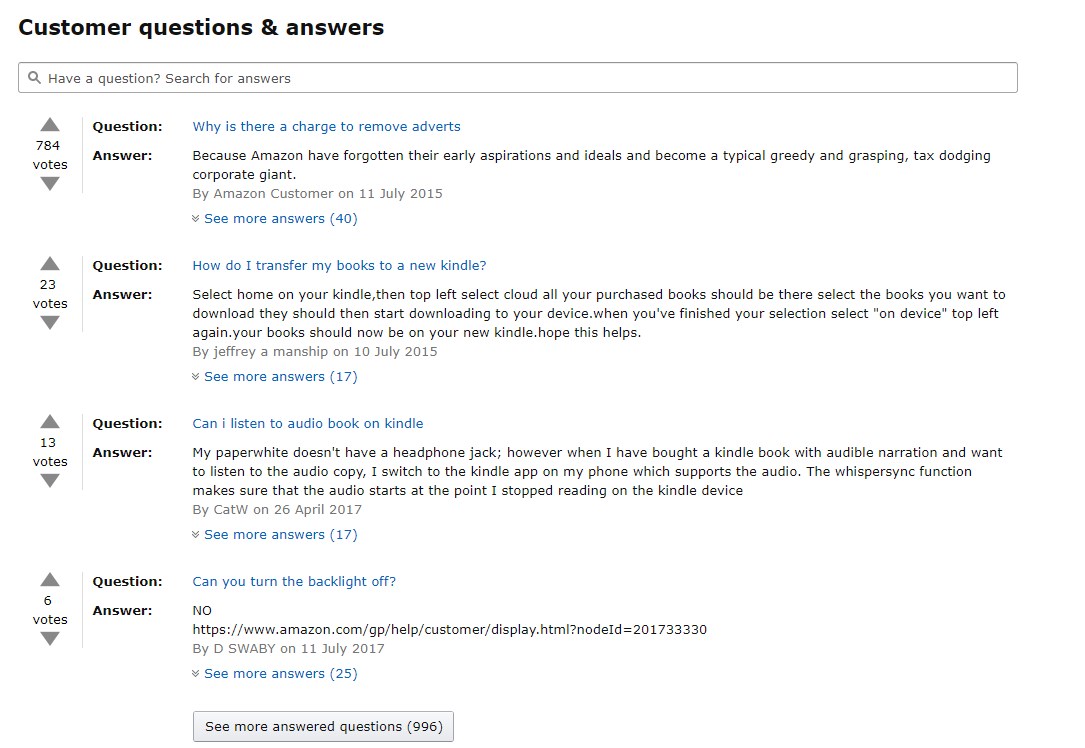
Is that it?
There are a wealth of additional areas where you can further improve your ecommerce product page design and conversion rates such as using conversion rate optimisation software or heatmap software such as Hotjar to review what users are doing when they land on your product pages. We also haven’t touched on site speed.
However, if you can start to address some of the areas above then you are well on your way to improving user experience and on-page SEO performance on your site.


